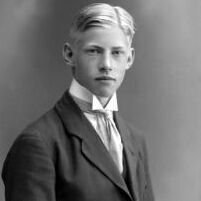Writing Action
Multiple meanings, when talking about ‘action’ in the world of writing of fiction. Something to get readers to lean forward in their chairs, adjust their laptop screens or get a tighter grip on their mobile device. A heightened focus on the moment at hand. And while I’ve definitely written my fair share of chases, fight scenes, and shootouts...that’s not the only kind of action that we’re going to be talking about today.
Ask yourselves the question...what is ‘action’? And the answer is simple. It’s moving forward and following a path of behavior based on the thoughts in your head and the emotions in your heart. Now that can be anything from an outburst of violence in a life or death situation...or it can be that nervous walk up to the cute boy at the Homecoming dance and forcing yourself to talk to him for the first time. Action is the bridge between what you have happening and what you hope to have happening once action is taken. But we’ll get into that in just a little bit. For right now, let’s start out with the idea of physical action in your stories. As many talented authors reading this are really great at writing fantasy fiction, I’m assuming that there is some sort of physical confrontation that takes place during their journey, correct? So how does one go about writing that out and making it as exciting as they want it to be for their audience?
It’s more than just swinging a sword or casting a spell. Those may be the guidelines of your scene, and the tools used to build something amazing with...but the actual creation of the scene is all up to you. The shortness of breath, the danger involved, the risks at stake...each one of these elements can be an exciting moment in their own right, but one thing that I’ve learned since the beginning and always keep in mind is this...
Action...is...CHAOS!
A sudden push with no real guarantee of a positive outcome. It’s the craft of taking all of those elements at once and combining them together, where multiple objectives have to immediately be pursued and accomplished, all while crossing paths with many other conflicts of interest. When I’m plotting out an intense action scene, I usually go out walking with my headphones on and some hyped up music blaring in my ears, trying to find just the right rhythms and crazy moments that I can incorporate into the madness. I’m thinking, “What if he’s fighting off two guys at once...and now he has to find his around them because they won’t go down and he needs to keep moving forward.” Then, I might add another element of danger into the mix to energize the scene even more. Maybe there are other people who are shooting at him while he’s trying to fight. Then...maybe there is a panicking crowd of innocent people racing back and forth in hysterical patterns that he doesn’t want to get hurt, but they’re obstacles in his path and blocking his way. Still, he’s trying to save them by telling them to GET DOWN! Maybe the floor is caving in? Maybe something catches fire...and the flames are uncomfortably close to something that is extremely explosive? Who knows...but with all of this going on at once, what started out as a few traded blows between a couple of thugs has now turned into a full blown catastrophe as a series unbelievably lethal threats get added to a situation that was already deadly to begin with. I know it sounds like overkill, but in just the right places of your story, with just the right characters...it really can end up being a truly breathless experience. Even more so once you really put the pressure on your main character by putting him or her under some rather severe time restraints.
Put the clock on them! Set the time! And let them figure out while your audience gasps and wiggles with anxiety in the meantime. It always works.
To illustrate my ideas here and show you what I mean by piling on a bunch of chaotic elements on top of each other all at once to heighten a feeling of action and desperation, I’d like to point you all towards one of my absolute favorite action scenes from the “Indiana Jones” franchise down below! When I was a little kid, I would rewind and rewind and rewind...watching this opening scene over and over again until the VHS tape got all blurry and out of whack! Hahaha! But I LOVED it! There was SO much going on at once! And as a little boy, I could hardly sit still trying my best to absorb it all at once. This is action at its finest. It’s danger, it’s comedy, it’s high stakes...and the clock is ticking, so he’d better be quick to find a solution!
Indiana Jones is in a fancy club, and he’s just been poisoned by the gangster he was doing business with. There’s an innocent showgirl, Willie Scott, in the mix...and a pricelessly large diamond that she would love to get her hands on more than anything. What happens here is pure genius in my eyes! Even to this day, it still gets me all amped up to watch it again!
Check it out! And look at how quickly things escalate in this scene. How many obstacles keep getting thrown in the way. How conflicting interests cross paths. The whole package is right here for you to bear witness to.
The thing about this scene is...despite the hysteria taking place...there’s a certain ‘flow’ to it all that keeps things moving in a forward direction that makes sense. You get to see enough of the insane antics to feel almost overwhelmed by it all...and yet you don’t really have any really trouble following what’s going on. The characters are placed in ways where they can convincingly run into one another, be in danger, and still have a way to find an effective ‘out’ if only they’re skilled enough and can think fast enough before they meet their untimely demise. This is something that you want to keep in mind while creating an intense action scene in your stories. Think of it as ‘controlled chaos’.
There have been many times when I had to use a piece of scrap paper to place all of my characters in a particular scene and draw lines to keep track of what they’re doing and where they’re going. It’s not cheating to keep your notes close and follow them to a tee. Have your characters help each other out when their fights intersect. Think about the environment that they’re battling it, and what are the dangers there? Is it in a tight space where there isn’t a whole lot of room to move around? Are they fighting in the dark? Are there huge drops or pits of fire and lava surrounding them where one wrong step might mean the difference between life and death? Is your main character fighting one big enemy, or many enemies at once? Or maybe there are...I don’t know...wild animals reaching out at you from cages on different sides of the hallway? Create an environment for your action scene to take place in, and then figure out how you might be able to use different elements of said environment to heighten the tension even further as the scene continues. Change things up from place to place. An energetic action scene should be a short story in itself. You know?
Another example that I’d like to use here comes from the end of the original “Jurassic Park”, where you can see all of these things in play at once. Notice how the immediate goal of the characters switches from one objective to the next so quickly. Beginning with them trying to be quiet enough to sneak by in the air ducts overhead. Then...SWITCH! They’ve been discovered! Now it’s gone from being a stealth operation to a rapid chase as they just try to get to a place of safety while avoiding the danger nipping at their heels. Then...SWITCH! As they leave the duct with their enemy in pursuit, the goal is to safely find a way down to the ground below. Switch to the raptor jumping on the same shaky structure which begins to crumble under their combined weight and separates the protagonists as things fall apart...making the objective to simply hold on for dear life. And when that can’t be achieved, they just brace themselves for a hard fall, all while dodging debris...etc.
What creates the action in this scene is the immediate nature of how it’s put together. The main characters aren’t given a chance to come up with a plan that reaches past the next few seconds needed to survive their current predicament. Everything feels panicked and improvised at a moment’s notice...even if you spent the better part of a week planning out every crucial detail to fit it together in a smooth motion where everything feels hectic and unplanned, even if it isn’t. Give it a look.
There is a rhythm to this scene that keeps audiences on the edge of their seats, and if you take the time to write the details out just right, the impact is breathtaking. The fun of being an author is that you’ve been given the magical ability to not only conduct all of the actions in your imaginary workspace...but you can also reveal the frantic thoughts of your characters as well. Dive into that. Let your characters thoughts help you to direct the action as it’s happening. My feet begin to slip! I’ve got to save the kid! If we don’t get out of here soon...we’re toast! Another second and I probably would have lost a leg! By getting your characters involved, you are also getting your readers involved. And that is always a bonus, because the immediate threat coming after your characters feels as if it’s coming for your readers as well. It helps to heighten the tension of the moment.
Also...and I know you’ve heard me talk about this before, but it will be more important when it comes to writing action than it will be anywhere else...shorter sentences speed up the scene. It’s an illusion, of course, but it really does work. Most people take a moment or two longer to fully absorb a longer, fully detailed, sentence. And you can toss a few of them out there if you want to flush out a particular motion or situation for a nice touch of flair here and there. But when the sentences are short are to the point...your audience will most like rush through it and get to the next sentence. And then the next, and the next, and so on. It creates this adrenaline rush in the scene that feels like a heavy train gaining momentum, all while giving the impression that it will be nearly impossible to stop once it hits a certain speed. Your readers should feel that and start looking for something to hold on to just they don’t end up flying off to the side somewhere and left behind in the dust. It’s an effective tactic keeps everyone locked in. Give it a try some time if that’s the kind of story you’re interested in writing.
I doubt you could find anyone better at creating a combination of everything that I’ve written about above than Jackie Chan! How he’s even ABLE to conceive to pull off half of the stuff that he does in his movies is an absolute mystery to me. Hehehe, when I write a lot of fighting scenes in my own fiction...it’s stuff like this that I’m picturing in my head. The kind of stuff that I don’t have words for. (And his older stuff is even more mind-blowing than anything he’s done in Hollywood!)
You have danger, speed, tension, high stakes, comedy, near superhuman stunt work, and precision, all going on at once. Everything works with that impeccable rhythm and flow that any fan of his will have already come to expect, and yet it all still feels like he doesn’t really know what he’s doing. He just happens to be a badass who can use the whole world around him at a second’s notice, where everything is a weapon, every move is just as unpredictable to him as it is to the audience, and nobody can think fast enough to keep up with him. Even if they have the advantage.
Duck! Jump! Omigod, look out! Watch your footing! Don’t fall! Gah! Hehehe!
Action at its finest...
What I love about Jackie Chan’s work when I watch and study the way everything is put together and choreographed with such finesse...is the feeling that you’re actually being pulled along the whole time. This is that ‘train gaining momentum’ feeling that I was talking about. As fast as it is happening, it never feels confusing. There are transitions from one part of the scene to another. If you watch closely, it’s like one part of the scene ends with him setting up the next scene. He might be fighting three guys at once and taking hits...and then he backs up against a wall and accidentally bumps into a fire hose. You may not notice it right away...but once he feels out for it and gets the idea, he picks his moment of attack and then turns it on to go wild and do some of the work for him. Then he moves towards the next scene flawlessly before you really have a chance to fully recover from the last one. And you can do the same thing with the words you use in your story to paint a vivid picture and create a feeling of movement. Plan these things out ahead of time, put them in order, and pull the audience along as excited spectators the whole way through.
Last, but certainly not least...
As I said when we were first beginning...’action’ doesn’t always have to mean a physical confrontation. That’s ust the easiest way to sort of have the concept stick out far enough for me to get the point across. Action can also be two boys suddenly hearing the rattle of their parent’s keys at the back door as they’re both completely naked and caught by surprise. Now forced to scramble around for their clothes and fix their hair and make sure to wipe that guilty look off of their faces before they get in trouble. Action can be lightly pushed forward to talk to that really cute new guy at work, and taking those first few tense steps towards their desk while desperately trying to come up with something clever to say so you can break the ice and maybe start up a conversation. It could be a protagonist who has finally had enough of being pushed around by an older sibling and deciding to speak up and tell them that you’re simply not going to take it anymore. Whether it’s a character stealing something that doesn’t belong to them, attempting to overcome stage fright during an audition, or being forced to break someone’s heart by telling them that they’re just not interested...the same rule applies. The language is different, but the techniques you use are the same.
‘Pull’ the audience along with your main character. Create a sense of momentum. Display a series of immediate choices that have to be made without any sense of what the outcome might be. Get in your character’s thoughts and allow your readers to feel their confusion and anxiety by describing the stakes involved. And combine that by having possible obstacles tossed in the way that could cause everything to go horribly wrong if they aren’t effectively dealt with or avoided completely. See? Action. Make sense?
Already, I’ve run my mouth for long enough now! Hehehe! Just use anything that you read here to your benefit if you can. And I hope it helps! As always, thank you for reading! Love you lots! And I’ll seezya soon with more! ![]()
-
 2
2
-
 3
3







2 Comments
Recommended Comments
Create an account or sign in to comment
You need to be a member in order to leave a comment
Create an account
Sign up for a new account in our community. It's easy!
Register a new accountSign in
Already have an account? Sign in here.
Sign In Now